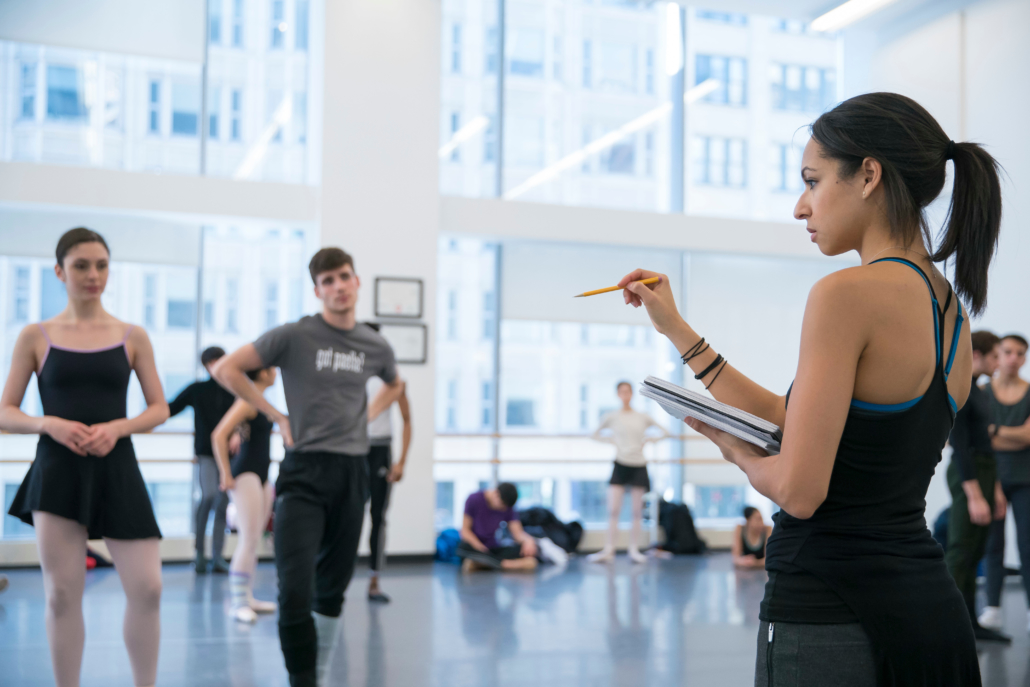Tackling the Problem: Why aren’t women hired as choreographers?
"The Devil Ties My Tongue" by Amy Seiwert performed for the SKETCH Series, 2013. Photo by David DeSilva. Courtesy of Amy Seiwert's Imagery
April 30th: South Arts: Professional Development & Artistic Planning Grants, April 30th: South Arts: Express Grants, May 6th: Doris Duke Foundation Grant, May 7th: South Arts Individual Artist Career Opportunity Grant, May 27th: Dancemakers Residency, June 1st: Miami DanceMakers
×
"The Devil Ties My Tongue" by Amy Seiwert performed for the SKETCH Series, 2013. Photo by David DeSilva. Courtesy of Amy Seiwert's Imagery
It is sometimes suggested that women simply do not think they can choreograph as men do. One aspect of the problem may be due to training that does not suggest that this is a plausible path. This is what makes Pacific Northwest Ballet School’s New Voices: Choreography and Process for Young Women course so significant. At a time when girls’ confidence begins to fade in comparison to young boys’, the school has introduced a class intended to empower them through creativity. Few programs like PNB’s exist at a ballet school level.
In fact, the majority of choreography courses are implemented at a college level. This problematic given the tendency for young dancers to skip college and go straight into the ranks of a company at a young age. Dancers are exposed to the choreographic process only through the lens of a performer, a tendency that is detrimental not only to their success as a dancer, but also to their confidence as they take their next steps in dance, following retirement.
In a time when ballet dancers are embracing new styles and career paths, their schools need to reflect that diversity and experimental nature.

Whether for a major or minor requirement, most university dance programs encourage dancers to explore all aspects of dance. For dance composition, students learn either through a course in which they produce actual works for the stage or through improvisation courses with no end-game of a performance. This opportunity to “workshop,” as choreographers often put it, is exactly what the dance faculty at Dean College are encouraging, Dance Spirit reports. The faculty even went so far as to assert that these courses should be a requirement in dance programs in order to “make sure your dance degree is going to work for you in the real world.” Dance Spirit suggests this may be due to the dying “choreographer/muse” relationship in a process that now “favors collaboration” or improvisation when prompted by the choreographer. As a dancer graduates and joins a company, he or she should be fully prepared to work closely with a choreographer and understand the choreographic process from the creator’s perspective.
This philosophy is extremely relevant for dancers joining smaller companies, where the hierarchical corps structure of a ballet company is replaced by a collaborative, “everyone does everything” environment. It may be advantageous for larger, more influential companies with the corps-soloist-principal hierarchy to embrace, too. Pacific Northwest Ballet artistic director Peter Boal, for instance, introduced collaboration and inverted the power dynamic of director-student relationships by showing his own new work, a piece he made on the Professional Division men for their School Performance, to students in the PNB school’s New Voices course. Following the showing, the group had a 30-minute critique of the work, which dealt with alienation and the support peers can offer. In this choreographer-to-choreographer discussion, the young women ended up helping Boal both in how to approach his final weeks with his dancers and in how to most clearly communicate his ideas for the work.
Dancers at other ballet schools who inevitably skip college will entirely miss this key element in dance pedagogy.
Stephen Ursprung, a professor of Dance Studies at Dean College told Dance Spirit, “‘Oftentimes we impose limitations on what the students can or cannot do and this ignites their imaginations. At first it may be scary or overwhelming: Many dancers come from very rigorous technical training and get caught up in whether what they do is ‘right’ or ‘wrong.’ In a choreography class, these binaries do not exist.'” If these ideas were incorporated into courses at ballet schools, we could be dealing with a greater pool of young dancers feeling empowered to choreograph, regardless of gender.
Reach out to us to learn more about our mission.
"The Devil Ties My Tongue" by Amy Seiwert performed for the SKETCH Series, 2013. Photo by David DeSilva. Courtesy of Amy Seiwert's Imagery

 Noted: Choreographer Andi Schermoly showcases the strength of ballerinas in...
Noted: Choreographer Andi Schermoly showcases the strength of ballerinas in...
Leave a Reply
Want to join the discussion?Feel free to contribute!